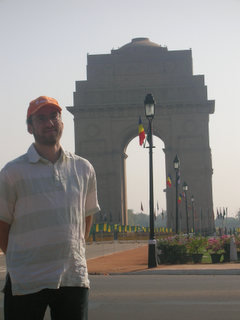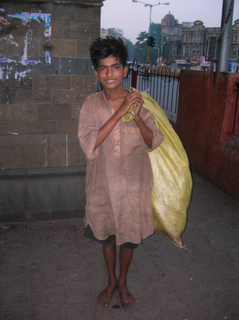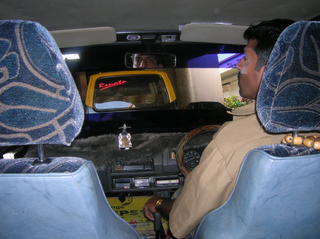Night view over Udaipur:

Udaipur has also some very expensive hotels (probably because it is known as one of the most romantic cities). We're staying more outside the city, which is still good and comfy.
Bottom view of temple stairs:

There are not many good restaurant, but one that I can definitely recommend is Ambrai, which is close to the waterfront with a view on the Lake Palace hotel. In the evening it is advisable to make reservations. The food is very good, the ambience is good and at night there are a couple of firework displays around 2030 or so.
Detail view of decoration outside temple wall:

The tour of the city also took us to a temple, another Hindu temple that is, which has a slightly different build than the others. I also took some detailed photographs of the artwork this time. The artwork on the side of the temple is based in layers. The elephant for example is for luck, the horse is for power. Above the horses is a long line of human figures. If you look closely, you will see that these figures are not repetitive, but are all different scenes.
Single snapshot of main entrance to palace:

The Internet access here is more abundant, but still not fast. Many of the shops have one or two PC's where you can access mail, but going to gmail or the blog is a pain to load. Also here in the hotel for example they say there is Internet, but it turns out to be a 333 Mhz machine in windows 98 with a 19,2000 bps connection. One of the shops said he had cable, but the effective speed over it was still not much more than a good-working dialup connection.
Scene at the main lake, near Lake Palace hotel:

There is also a lot of commerce in this town but not of the same quality as we saw in Jodhpur or Jaipur. So far, Jaipur was best for shopping.
We are about to go to the airport now to fly back to Mumbai. Probably I won't post anything until we're back in London for a couple of days. Then Paris for a night and half a day, then back to Recife. Yay! ;).
G>

















































